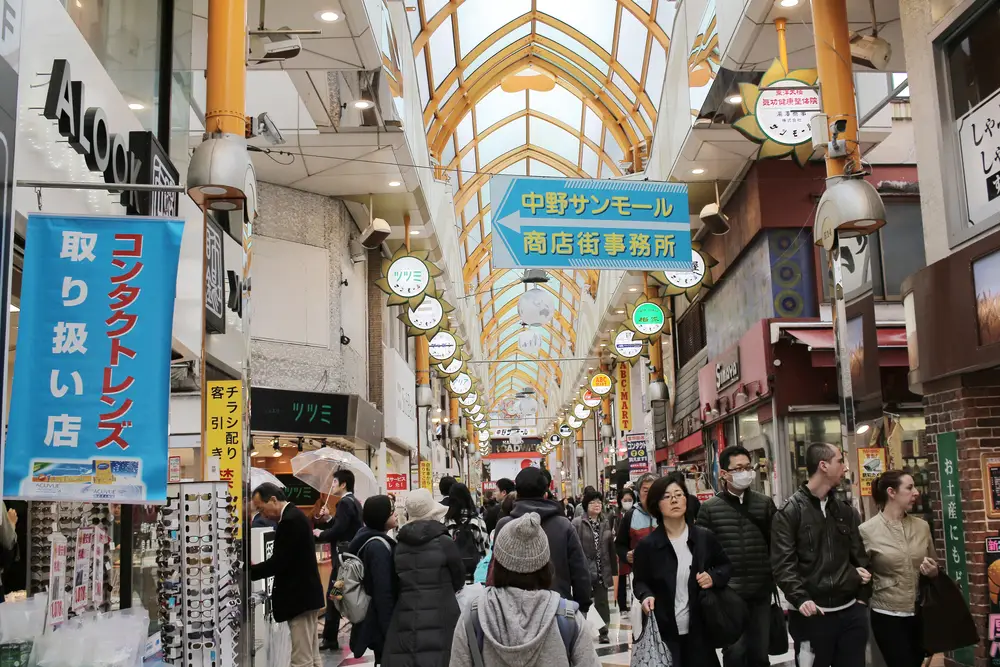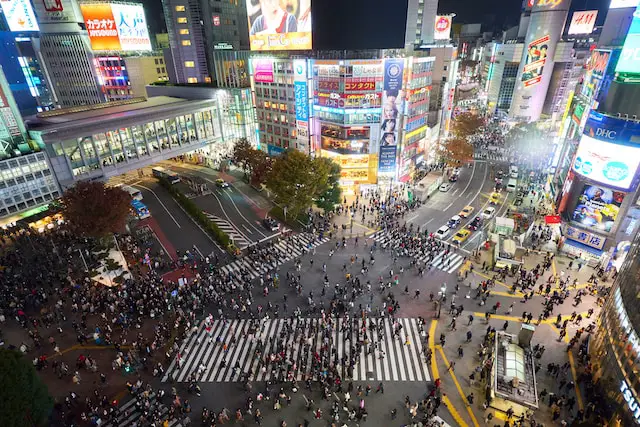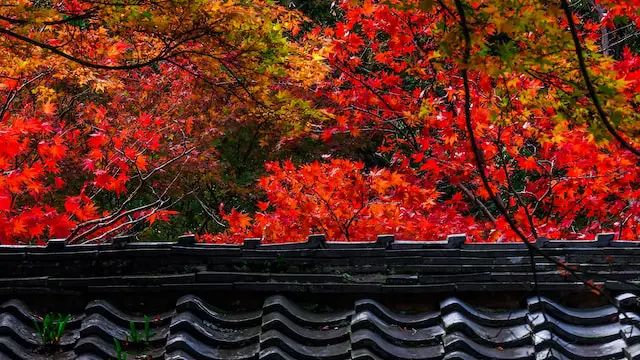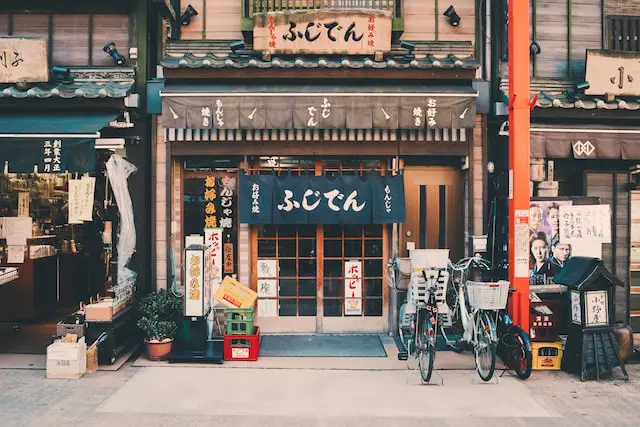Welcome to our comprehensive Japan Traditional Markets Guide. Japan has a charm unlike any other, steeped in a rich history and a vibrant culture that stretches from its grand temples to its bustling marketplaces. Delve deep into this world, exploring traditional Japanese markets and shopping streets, which serve as the heartbeats of their surrounding communities.
To truly understand Japan’s essence, each walk through these lively streets is a must-experience component of your Japan Travel, offering an Authentic Japanese Shopping Experience. As you traverse down each alley and lane, they unfold before your eyes like a living narrative, encapsulating Japan’s dynamic past and present.
From the nourishing local produce sold in the street markets to the artisanal goods found in the shopping districts, every item tells a unique story about the people, their craftsmanship, and their way of life.
Understanding Japanese Market Culture
The Japanese market culture is a delicate blend of the old and the new, forming an intricate tapestry of tradition and modernization. Wandering through the labyrinthine alleys of a “Japan Local Market Experience”, you begin to grasp the essential role these markets play in the lives of local residents. Each stall is a microcosm of the nation’s culture, presenting an array of delicacies, artisanal crafts, and unique souvenirs.
Markets in Japan aren’t simply places for trade and commerce. They are lively, bustling hubs where social interactions dovetail seamlessly with buying and selling activities, where stories are passed from one generation to another, and local traditions are kept alive. The “Japanese Market Culture” has a beat of its own, moving to the rhythm of the local community – a harmonious blend of voices, laughter, and the chime of cash registers.
These markets also serve as an open, palatable living museum, a kaleidoscope offering insights into the culinary history of the region. Every stall celebrates the ripeness of the season, a testament to the Japanese philosophy of “shun” – the precise time when a certain food is at its peak and is most flavorful. These characteristic nuances contribute to a truly authentic Japanese shopping experience.
Understanding the contours of Japanese market culture allows visitors not just to engage in a vibrant shopping spree, but also to immerse themselves completely in an experience of local life, textured by rich history, delectable food, and friendly locals. It is an adventure that beautifully captures the soul of Japan, making it an essential stop on any curated “Japan Travel” itinerary.
Top Traditional Markets to Visit in Japan
Immerse yourself in the admiration of the lively bustle that constitutes a quintessential aspect of Japan’s market culture. A trip to Japan cannot be deemed complete without a refreshing morning tour in some of its traditional markets.
Topping the list is Tokyo’s Tsukiji Market. Known as the ‘Inner Market’, it pulses with the rhythm of a wholesale fish market, acting as an early-morning hotspot for sushi lovers. Tsukiji Market offers an exhilarating insight into Japan’s local market experience and is undeniably an exciting part of retail therapy in Japan.
A stone’s throw away from the Gion district lies the narrow, five-block Nishiki Market in Kyoto. Enclosed by a colorful history, Nishiki market welcomes you with a symphony of aromatic food stalls offering roasted eel, marinated baby-octopus, matcha sweets, and more. The place is a spectacular canvas of visitors’ food fantasies.
When in Hokkaido, a visit to Hakodate Morning Market is a must. Presenting over four hundred vendor stalls selling a smorgasbord of seafood like crabs, squid, and urchins, Hakodate signals an endearing invitation to satisfy your seafood cravings.
These markets not only offer a rejuvenating shopping experience but also broadcast a tangible time-capsule of Japan’s history, culture, and traditions. Don’t miss out on the intensive atmosphere, the intricate flavors, and the vibrant vision they encapsulate as part of retail therapy in Japan.
Navigating Japanese Shopping Streets
Embarking on a thrilling retail expedition in the Land of the Rising Sun? Let our “Japanese Shopping Streets” guide help you navigate some of the country’s popular shopping havens with ease.
Starting off in Osaka, the renowned Shinsaibashi Shopping Street is a destination in itself. Here, rows of shops ranging from high-end designer boutiques to quirky stores that appeal to the hip crowd await you. Its bustling atmosphere is best captured during late afternoons or early evenings, preferably on weekends, for a truly vibrant shopping experience.
Moving east to Tokyo, we find ourselves in the heart of youth fashion at Takeshita Street. Known for its eccentric Harajuku style, the street exudes an exciting and youthful aura. It’s highly recommended to visit during weekdays when it’s less crowded, allowing you to enjoy each trendy store at a leisurely pace.
Finally, let’s not forget the iconic Ginza Shopping Street, Tokyo’s premier shopping district. Here, you will find a medley of luxury brands, chic cafes, and exquisite art galleries. The street transforms into a pedestrian paradise during weekends – an ideal time to visit if you’re up for window-shopping and relaxed strolls.
Despite the bustling shopping scenes, remember, etiquette is still vital in Japan. Maintain a respectful demeanor, and always take care not to obstruct others. Whether in the lively streets of Osaka or the sophisticated lanes of Tokyo, always respect local customs for a rewarding and fulfilling “Japan Travel” experience.
Best Shopping Streets for Souvenirs in Japan
If you seek to bring home a sense of the rich Japanese culture, look no further than the bustling shopping streets of Japan. These vibrant hubs offer an authentic Japanese shopping experience filled with traditional trinkets and captivating memorabilia.
Omotesando Shopping Street, nestled in the heart of Tokyo, is a paradise for those hunting for high-end and luxury souvenirs. Here, you can browse through world-renowned brands nestled beside local boutique shops offering unique, authentically Japanese items. Despite its posh setting, traditional Japanese souvenirs such as kimonos, yukatas, and beautifully-crafted ceramics can also be found.
However, a souvenir shopping spree in Japan would be incomplete without visiting a few uniquely Japanese stores. Don Quijote, boasting multiple floors of sheer shopping ecstasy, offers a truly Japanese shopping experience with its range of peculiar, exclusively Japanese products. Meanwhile, 100 Yen shops, reminiscent of dollar stores, offer cool, budget-friendly trinkets to remember your trip by.
To delve into traditional arts and crafts, do visit the historical districts in cities like Kyoto and Nara where numerous boutique shops offer rare, handcrafted items. Here, you can find traditional calligraphy brushes, ornate folding fans, silk textiles, delicate origami papers, and more.
Shopping in Japan promises a beautiful blend of the old and new, a testament to its rich cultural and historical charm. So prepare your shopping bags, and delve into these shopping streets for a treasure trove of memories!
Essential Japanese Phrases for Shopping
Experiencing an authentic Japanese shopping experience requires more than just thrills and happenstance. Equipping yourself with basic Japanese phrases for shopping can help you navigate your way through the bustling “Tsukiji Market Tokyo” or the “Shinsaibashi Shopping Street Osaka” with ease.
Having “Japanese Language for Shopping” in your arsenal can prove particularly helpful in enjoying your Japan travel experience. Here we present you with useful expressions that can make your shopping smoother and more enjoyable.
Firstly, if you want to ask the price of an item, you can say ‘Kore wa ikura desu ka?’. This translates to ‘How much is this?’. Remember, a polite request can go a long way in embodying the spirit of the Japanese Market Culture.
When curious about an item’s origin, the phrase “Kore wa doko no mono desu ka?” (Where is this from?) can prove quite handy. Likewise, understanding size expressions like “ii saizu” (good size) or simply “chisai” (small) and “ookii” (large) can be beneficial.
Keeping these “Japan Travel Tips” in mind, it’s also wise not to forget the golden phrase of Japanese shopping etiquette – “Mō sukoshi yasu kunarimasu ka?” meaning, “Can this be a little cheaper?”. Just remember, bargaining in Japan is not common in all places, so use this phrase sparingly and with caution.
Lastly, show your gratitude to the shopkeeper with a humble “Arigatou gozaimasu” (Thank you very much), yet another sincere demonstration of respect and appreciation.
With these phrases in your repertoire, your Japan travel and shopping venture is bound to be a memorable one. Just remember, it’s all about practicing and enjoying the authentic Japanese shopping experience each step of the way!
How to Bargain in Japan’s Traditional Markets and Shopping Streets
The age-old tradition of bargaining is not as prevalent in Japan as it may be in other Asian countries. In fact, most prices in the Japanese shopping streets and markets are fixed, and attempting to haggle could lead to an awkward situation. That being said, there are exceptions to every rule.
At certain venues like flea markets or antique markets, bargaining might be more acceptable. However, it is crucial to know the art of negotiation is often about subtlety and understanding the seller. Maintaining harmony, or “wa” as it’s called in Japan, is a cornerstone of Japanese culture including their marketplaces.
When engaging in bargaining in Japan, remember to always remain polite and considerate. Instead of going aggressively for a lower price, it might be more beneficial to show genuine interest in the product, and the vendor may offer a small discount as a token of appreciation.
Further, understand that not all goods are subject to negotiation. Typically items with readily displayed prices aren’t subject to haggling. Besides, smaller independently run shops are more likely to give a small discount compared to large retail chains.
As part of the authentic Japanese shopping experience, tourists are encouraged to indulge in bargaining where it’s appropriate, but always observe and respect the local customs and etiquettes. Indeed, when done right, negotiation isn’t just a way to get a better deal, but also a way to connect with locals and appreciate the culture more deeply.
Conclusion
Embracing the unique allure and enchanting whispers of history in Japan’s traditional markets and shopping streets is undoubtedly a pivotal part of an authentic Japan travel experience.
Through exploring the vibrant and bustling aisles, you immerse yourself in the nation’s cultural pulse, where vendors skillfully master their craft. Japan’s traditional markets yield not just an abundance of fresh local produce and intricately crafted wares, but also a rich tapestry of human interactions that cannot be replicated elsewhere.
A leisurely stroll down the Japanese shopping streets reveals an exquisite blend of age-old tradition and contemporary sophistication. Whether you’re a lover of high-end fashion in Ginza or seeking quirky finds along Takeshita Street in Tokyo, every corner turned represents a distinct chapter of Japan’s multifaceted narrative, just waiting to be discovered.
Finally, as you return home laden with unique souvenirs laden from Omotesando shopping or the rich produce of Tsukiji Market, remember that each item holds a story, a slice of Japan’s vibrant character, artfully woven into tangible form.
Every facet of the Japan Traditional Shopping Guide is designed to widen your cultural lens and deepen your appreciation of this remarkable island nation. So, embark on your Japan Travel today, immerse in its pulsating local market experience and fall in love with its remarkable charm. Arigatou Gozaimasu (Thank you) and happy shopping!




